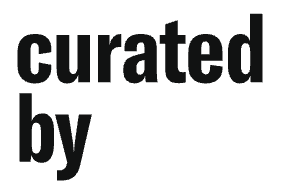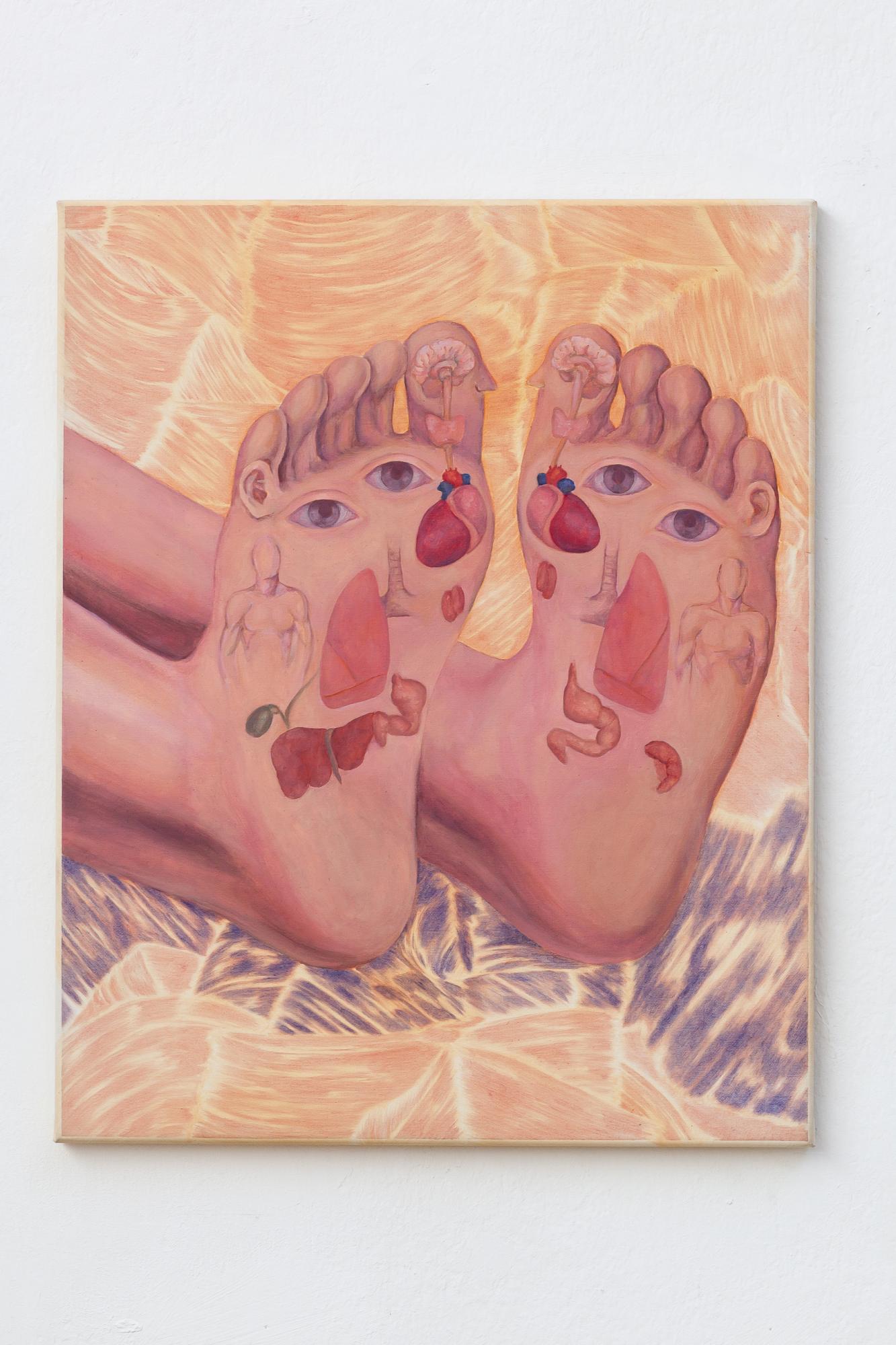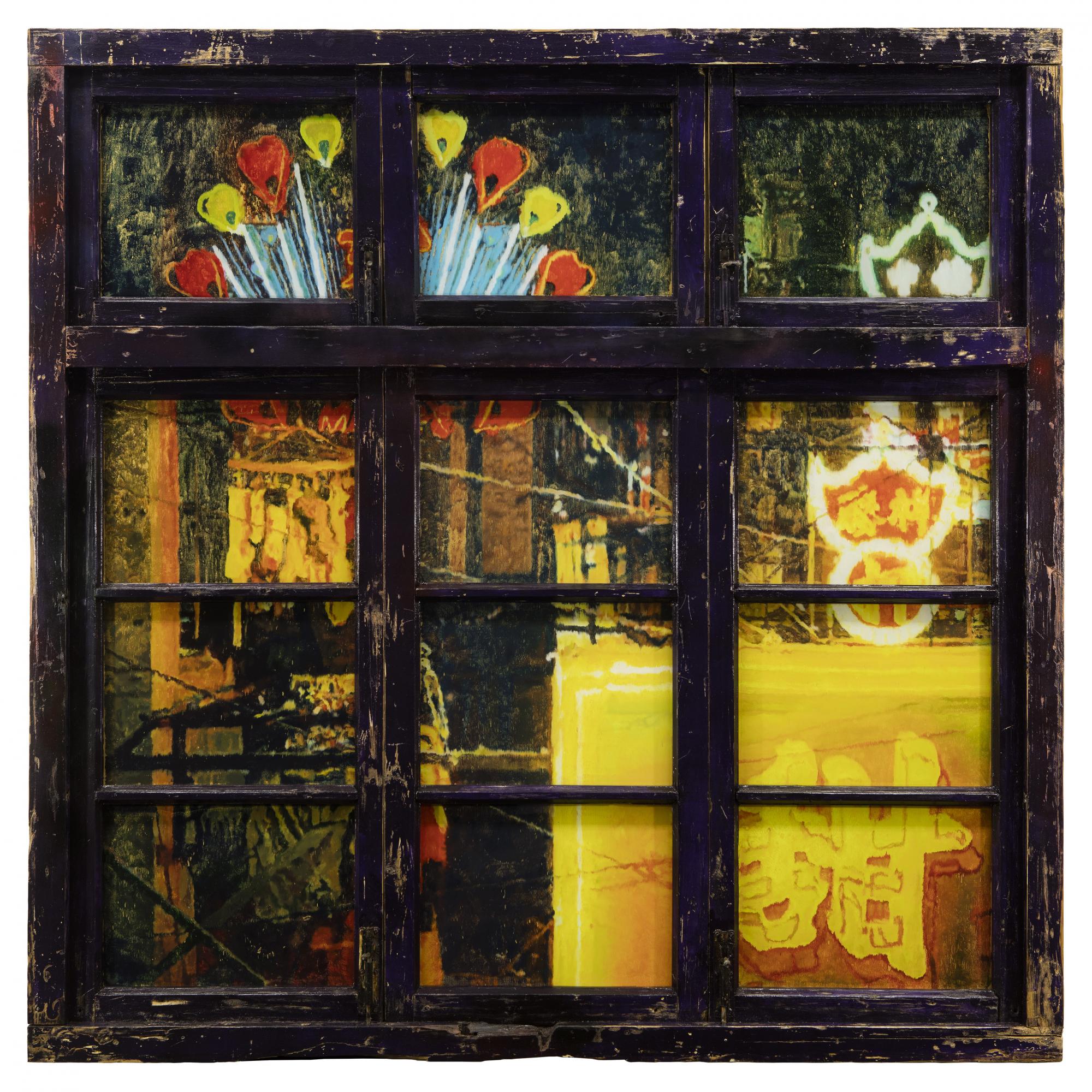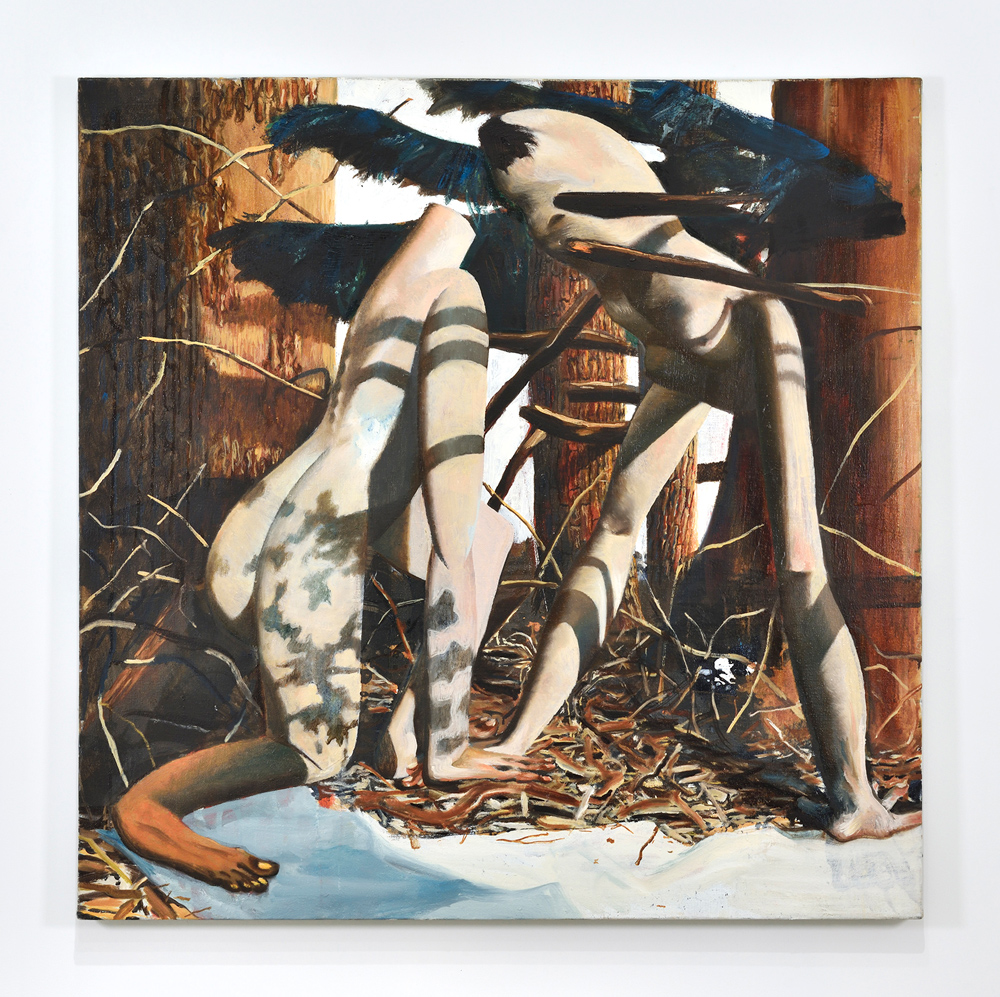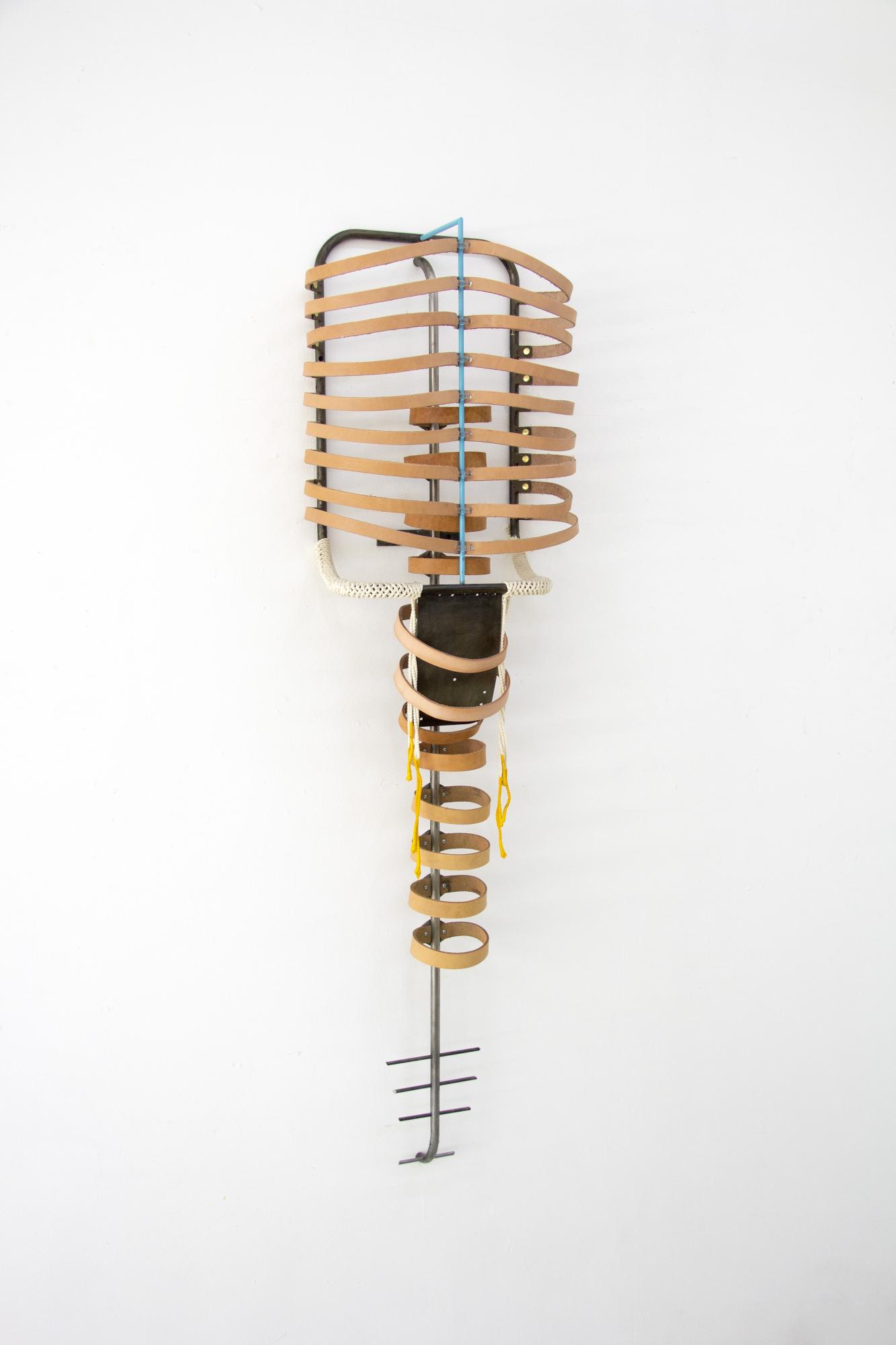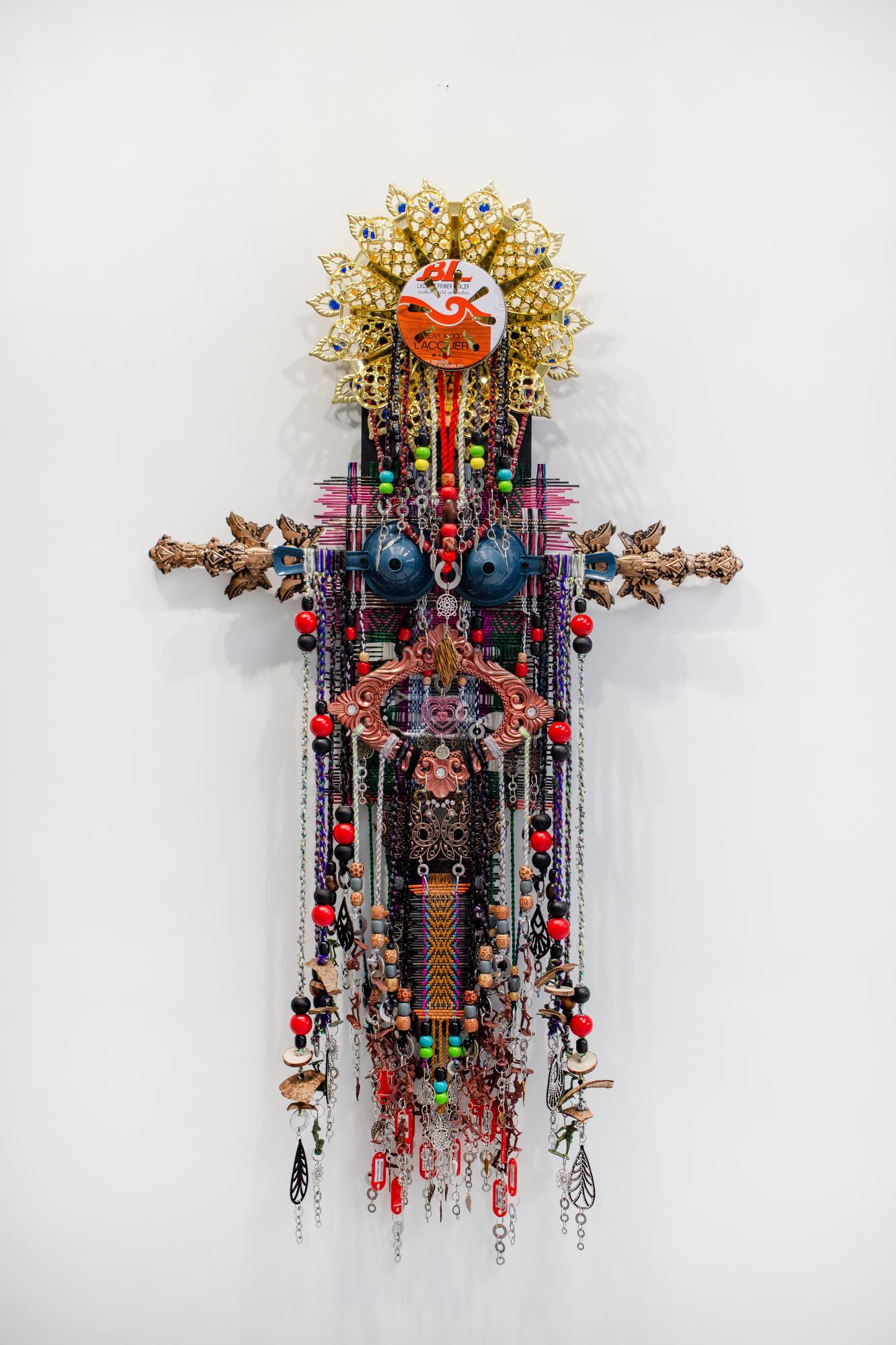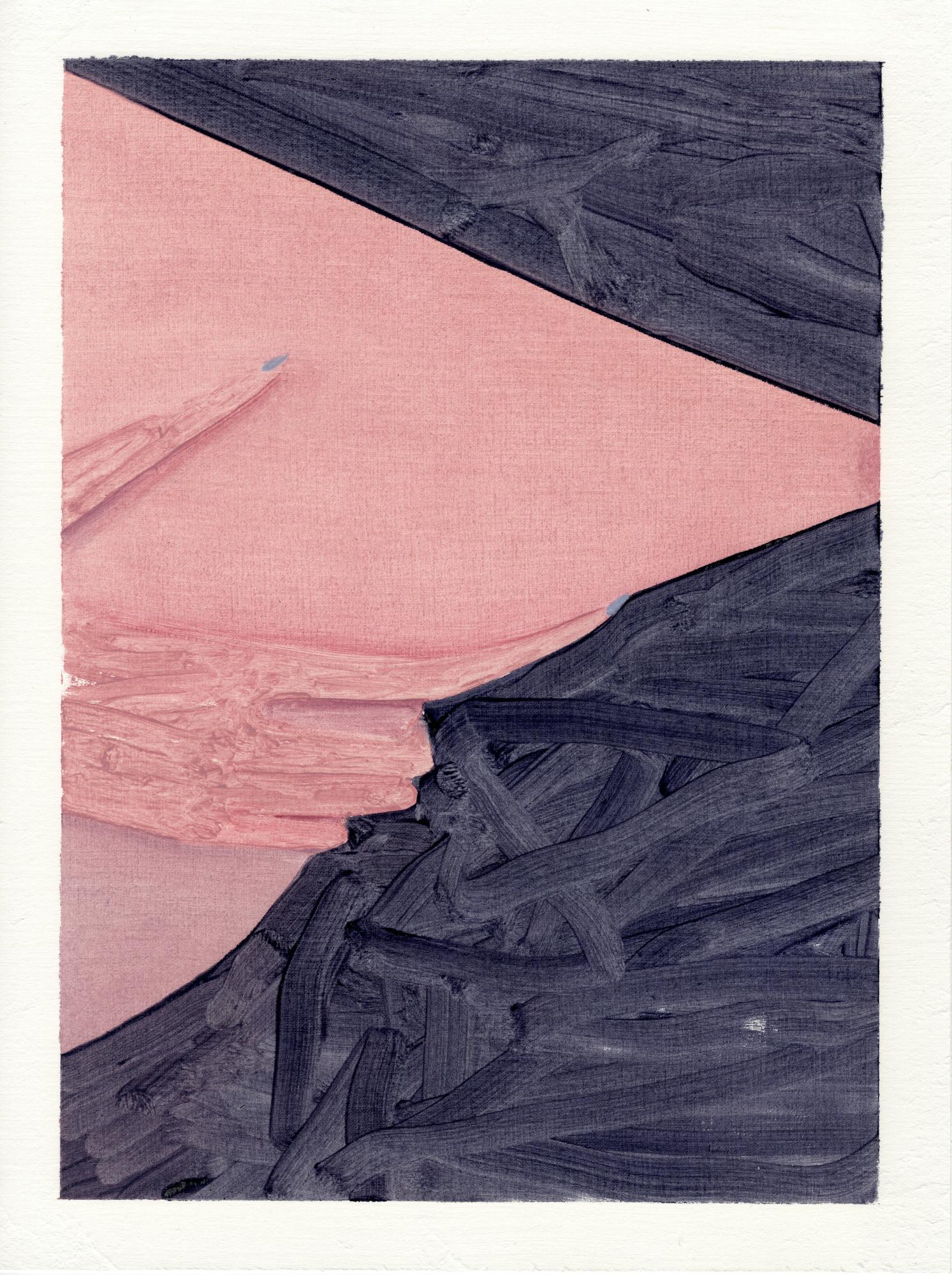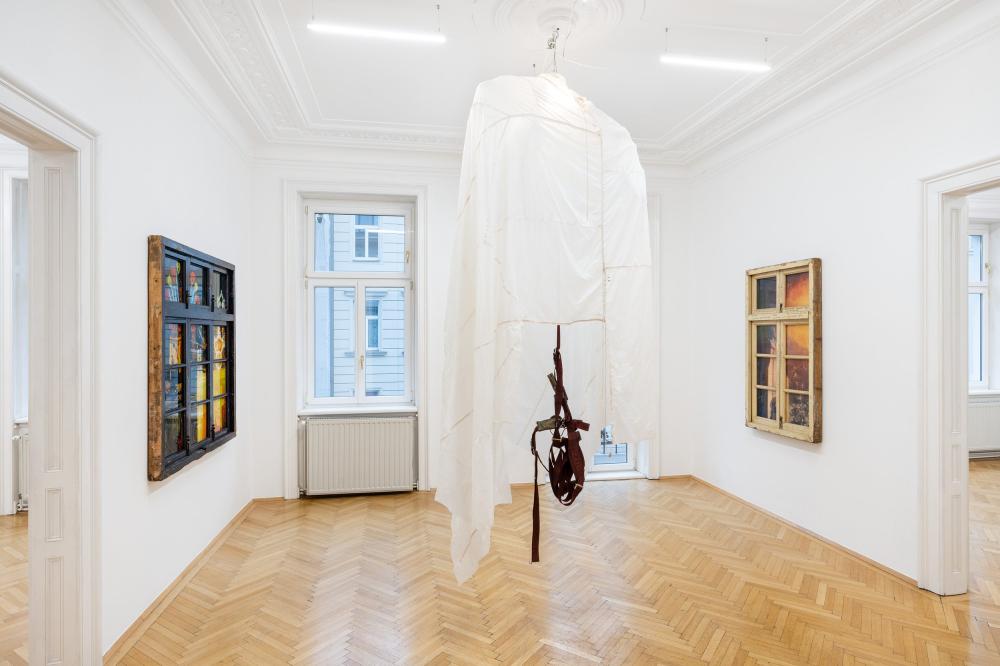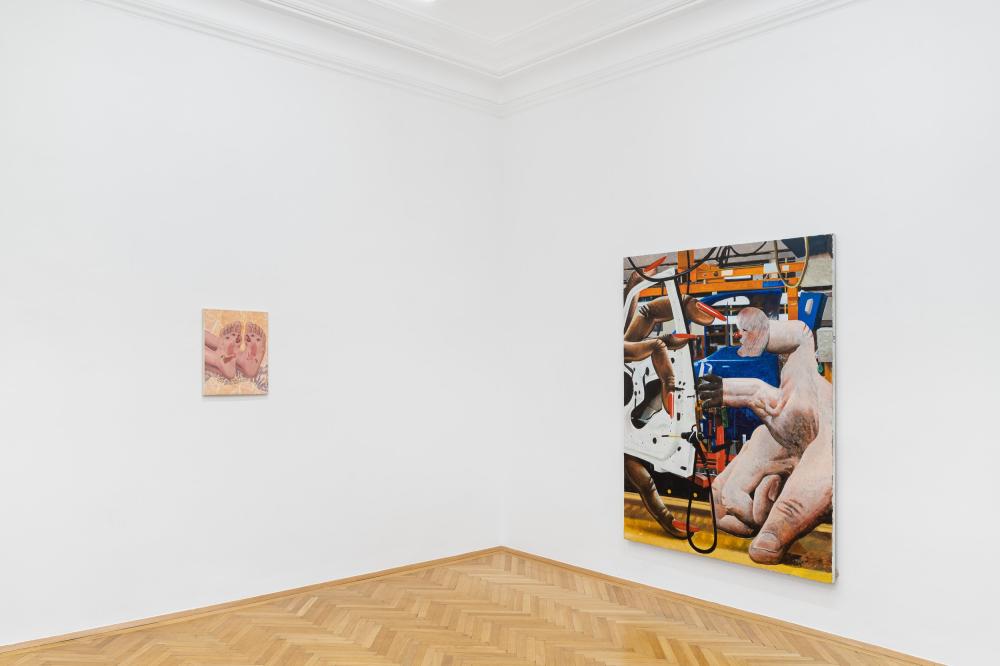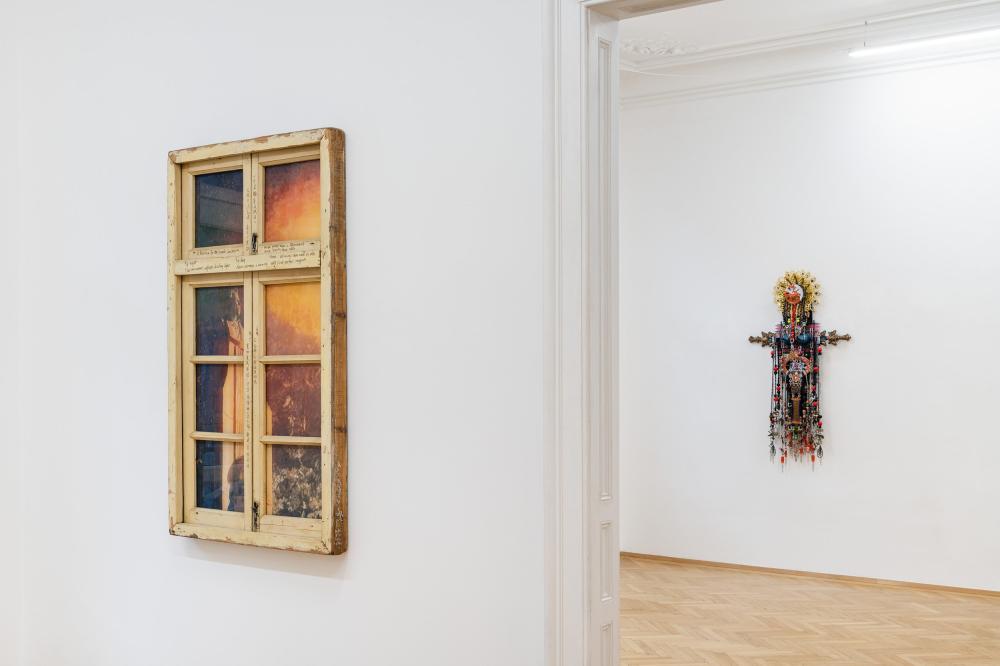Zeller van Almsick curated by Frédéric Bonnet
„The Disorganized Body“

www.zellervanalmsick.com
Curator(s):

Frédéric Bonnet is an art critic and curator based in Marseille. He has curated exhibitions in institutions such as the Musée d’art moderne de Paris, the Bass Museum, Miami Beach or the Museo Amparo, Puebla (Mexico), with artists such as General Idea, Mike Nelson or Sheila Hicks among others.
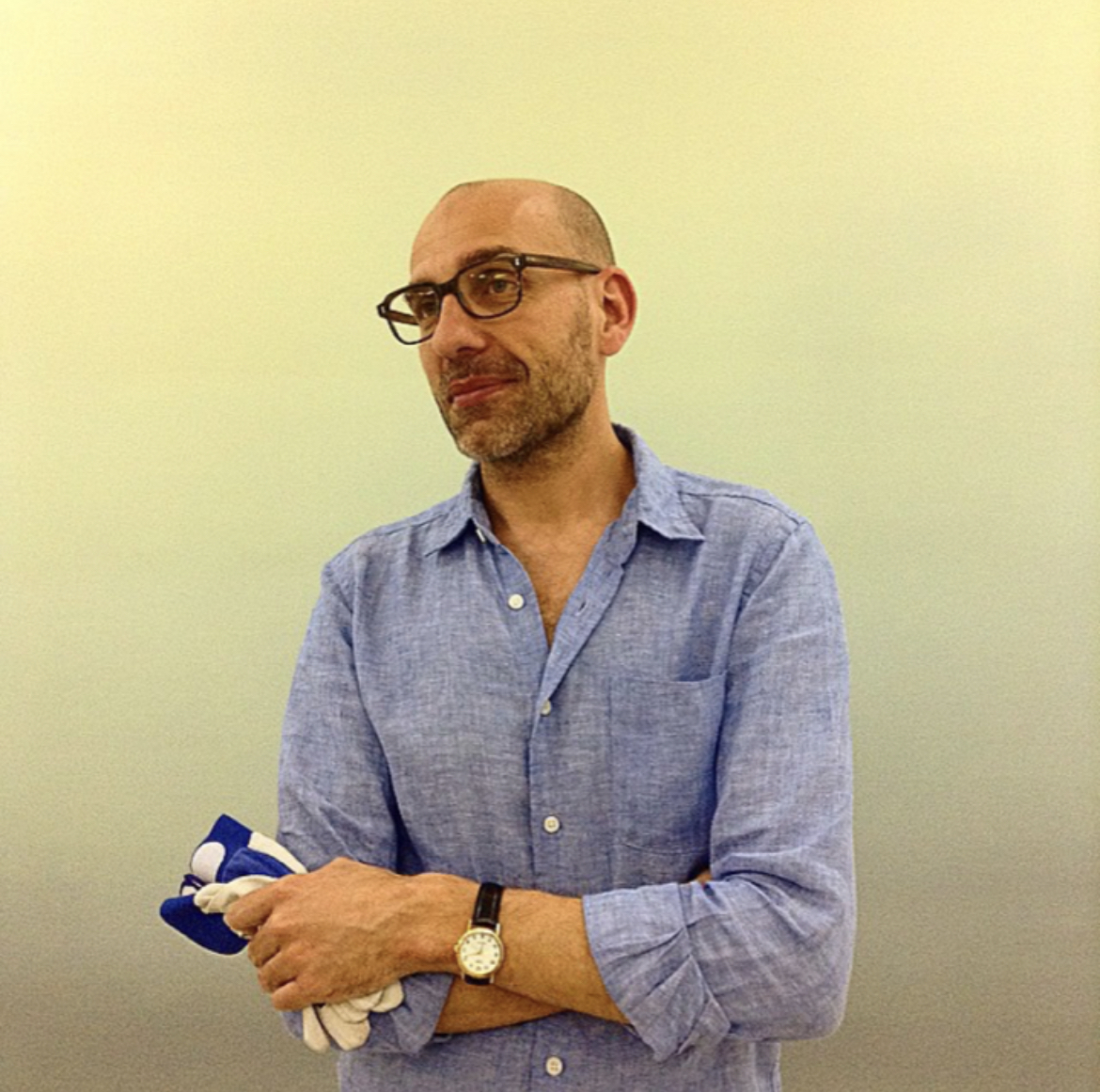
Artist(s):
-
Yeni Mao MoreYeni Mao (b. 1971, in Guelph, Canada). The sculptural practice of Yeni Mao engages in issues of fragmentation, equations of the body and architecture, and material alteration in of itself. Working with the agency of materials, objects and building systems, Mao emphasizes the tension between both their embedded and perceived significance in a play of recognition. The fractured methodology of assemblage relates to our own political, national, and spiritual formations. This collection of gestures is a divination, assembled from diverse sources, defining a condition. Transformation as a state of being. Mao pits the physical and psychological properties of restraint, domination and order against the chaos of the visceral human condition. The works are cyborg constructions that play with architectonic suggestiveness, placing importance on absence through a circumstantial framework. Mao layers his own personal histories over the expansiveness of these concerns, most recently the projects are based in family mythologies. Mao received a BFA from The School of the Art Institute of Chicago, and subsequently trained in foundry work in California and the architectural fabrication industries of New York. Mao lives and works in Mexico City. Mao’s work has been featured in numerous international exhibitions. Most recently, Mao presented the solo exhibitions “Yerba Mala” at Campeche in Mexico City, ”I desire the strength of nine tigers” at Fierman Gallery in New York, and a public sculpture with Brooke Benington in London. Among the many group exhibitions he has participated in are “Otrxs Mundxs“ at Museo Tamayo in Mexico City, “Transnational” at Proxyco and “The Waste Land” at Nicelle Beauchene in New York; and The IX Bienal De Artes Visuales Nicaraguenses in Nicaragua. Mao is a recipient of the Pollock-Krasner Foundation Grant 2021, and has been awarded multiple residencies including Casa Wabi in Mexico, The Lijiang Studio and Red Gate Gallery in China, The Fountainhead Residency in Miami, OAZO- AIR in Amsterdam, and Flash Atöyle in Turkey. Mao’s work has been written about in Art in America, The New York Times, Time Out New York, The Advocate, The Village Voice, and the Bangkok Post.
-
Anne Samat MoreAnne Samat (born 1973 in Malaysia) Lives in Kuala Lumpur, Malaysia. Anne Samat blends the aesthetic of international queer cultures—which she proudly represents as a transgender activist—with various textile and bricolage influences from South East Asia and beyond. She queers tradition with originality and confidence, creating figures that defy any fixed categories, be it of species, gender, or human versus sacred or fantastical figures. Samat graduated from the Mara Institute of Technology in Malaysia with a bachelor’s degree in textile design with an emphasis on weaving and minor in resist print technique. She has shown extensively in South East Asia, most recently in an exhibition entitled Stories We Scare Ourselves With at the Museum of Contemporary Art, Taiwan (2019), Elevation Laos, Vientiane, Laos and the Yokohama Triennale in Japan (2017) These achievements are complemented by her 2018 exhibition at Cestfossel Kunstlaboratorium in Norway and her 2019 residency and museum show at Hudson Valley MoCA in New York.
-
Michael Fanta MoreMichael Fanta (born in 1989 in Graz, AT) Lives and works in Vienna. He studied at the Academy of fine Arts, Vienna, with Daniel Richter and at the Academy of the Arts Iceland, Reykjavík. Fanta has been included in numerous exhibitions in Austria and across Europe. Recent group shows include Berlin > Graz (via Stockholm) in Kunsthalle Graz and Dangerous Stuff, Julius Getty Gallery, London. Solo exhibitions include Michael Fanta: Chewing Gum in Class, Rhizom, Graz, Babyface, Zeller van Almsick Projekte at Konzulát Studios, Berlin and Neue Bilder, Wien Museum MUSA.
-
Minda Andrén MoreMinda Andrén (born 1990 in Sweden) Minda Andrén lives and works in Vienna, where she studied at the Academy of Fine Arts under Daniel Richter. Andrén builds visual riddles from the embedment of found and borrowed images that she collects from glimpses and motifs taken from our daily surroundings, physical and digital media. Andrén resignifies the original images into playful, intricate compositions that dislocate their original connotation to ask questions about what happens when flows of images, meaning, and interpretations overlap, thus playing with the temporalities of digital media from the supposed staticity of painting.
-
Laurent Proux MoreLaurent Proux (born 1980 in Versailles, France) Lives and works in Paris. In his painting and drawing, Laurent Proux produces powerful and original imagery that seeks through his formal choices to resolve the questions raised by his subjects. Described by some as a realist due to the subjects he depicts—industrial machinery, workstations, sexualized bodies, etc.—his style finds its emancipation through his never-ending exploration of pictorial solutions, the integration of aberrations, bringing planes into collision, the use of artificial colors, all freeing his oeuvre from the opposition between figuration and abstraction. He approaches the human form through fragments, exaggeration and the use of silhouettes to create a kind of body-cum-machine, politicized and under assault, often disturbing and occasionally sentimental. His canvases take the form of a stage, in an altered perspective and the artist addresses the spectator with a visual and intellectual enigma running through the image. Laurent Proux’s oeuvres are included in the collections of the National Center for Visual Arts (CNAP), the Occitan and Limousin regional contemporary art collections (FRAC) and the Paris Municipal Collection (FMAC). His work has been exhibited at the Mana Contemporary in Chicago (US), the Shanghai Art Museum (CN), the Moscow Center for Contemporary Art (RU), the Musée d’Art Contemporain in Lyon (FR), the Limousin FRAC in Limoges (FR) and at the Lieu Commun in Toulouse (FR).
-
Li Qing MoreLi Qing (born 1981 in Huzhou, Zhejiang Province, China). He lives and works in Hangzhou and Shanghai. His paintings, installations and video works seek rational rifts in similarity and contradiction, acting on the perception and acknowledgment of a viewer through circuitous and overlapped structures. In recent years, his works track the historical fragmentation and ideological conflicts that have occurred widely in the dissemination of information, collective memory, and knowledge experience. Simultaneously, his works are testing the tension and contradiction between image, language, symbol and social space, connecting the multi-level elements of experience in series to construct a conflict structure. The capture of micro-politics in everyday spaces and images, the questioning of political identity in aesthetic tradition, and the observation on the identity of Chinese Art in the context of Global Art, all reflect his historical consciousness among the younger generation of Chinese artists.
-
Sergio Verastegui MoreSergio Verastegui (born 1981 in Lima, Peru) Lives and works in Paris. Superposing layers of meaning and materials, Sergio Verastegui develops a body of work where he tends to write the fragment within sculptural forms. With a strong presence of the materiality but also supporting the conceptual rigour, his works are to be considered as pieces of reality extracted from a torn world. In the chance meeting of various objects, emerging situations of fragility, between narrative tension and poetry, traces and accidents. Sergio Verastegui graduated at Escola de Artes Visuais do Parque Lage, Rio de Janeiro (BR) and then at Villa Arson, Nice. He has recently exhibited at Institut Français (Madrid), CAPC (Bordeaux); Dienstgebäude (Zurich); MAMCO, Geneva (SW); Meetfactory (Prague); Salon (Madrid) and Casa Imelda (Mexico City). He is the grantee of the Étant Donnés Program of the French Institute and FACE Foundation, in partnership with Comité Professionnel de Galeries d’Art. His works can be found in the collections of CNAP, MAMCO, FRAC Bretagne, CAPC Bordeaux, FRAC Île-de-France, and FRAC-Artothèque Nouvelle Aquitaine.
Exhibition text
More
Beyond the major upheavals they imply in terms of democracy, organization and nature of power, and also geographies and territories, the violent geopolitical havoc at work in Eastern Europe—just as elsewhere in the world—has a profound impact on a different field: the bodies... wounded, affected, missing, displaced... when they are not the object of a bitter ideological and political battle, as we have recently been reminded of with the revocation of the constitutional right to abortion throughout the United States of America.
The Disorganized Body exhibition is thus understood as a digression related to the experience of the body, be it present or absent, which has become an organ of reflection for artists from different parts of the world and with contrasting practices, but who have all—at least in part of their work—addressed corporality by going off on a tangent vis-à-vis a frontal, standardized or idealized representation in order to better single out disorders undergone by bodies.
In Laurent Proux’s paintings, bodies—stretched or deformed—often fight—physically or metaphorically—as seen in Querelle (2020). The improbable face-to-face of two giant hands in a factory, where the potentiality of violence arises through bodies that are not real, and confront each other within an industrial tool, produces questions related to the capacity, productivity, and control of bodies and souls.
Minda Andrén’s work also evokes a fight in attitudes, gestures, and incongruous actions, which shift the use and the place traditionally assigned to bodies, as if the pose, the attitude, or the unfolding of daily life were inexorable to become subject to disruption.
With the comical and absurd sketches throughout his work, Michael Fanta makes black comedy cringe. The body is clearly present, rarely represented in its entirety, rather seen in fragments, in compositions where sexuality and physical or mental violence resemble forms of alienation.
Anne Samat resorts to the ancestral figures of Sarawak in Malaysia to draw from them both a spiritual homage and mistrust of the contemporary world and the way in which bodies are absorbed and treated there, using silhouettes, spirits, ghost-like figures made with poor objects that inundate consumerist society.
The body is also—physically—absent in Yeni Mao’s work, while it is ubiquitous through emanations, traces, fragments, or clues, just like a ceramic organ that seems tormented by the coldness of a metal structure or what appears to be a carcass emptied of all traces of flesh.
It is absent even in the Méduses by Sergio Verastegui, ghostly floating parachutes where no body is to be seen, only some scrap from the destruction remains, and paradoxically, the diffuse light shining through the piece could be a signal calling to take refuge in it, as though perception were blurred.
Disorganization, where bodies are concerned, can also come from vision. Li Qing not only blurs eras and the limit between reality and fiction in his Windows Series—real wooden windows on which fictional scenes and imaginary landscapes with historical or phantasmatic hints are painted. He puts to the test the very logic of gazing, a disorganized gaze at the service of a disorganized body.

